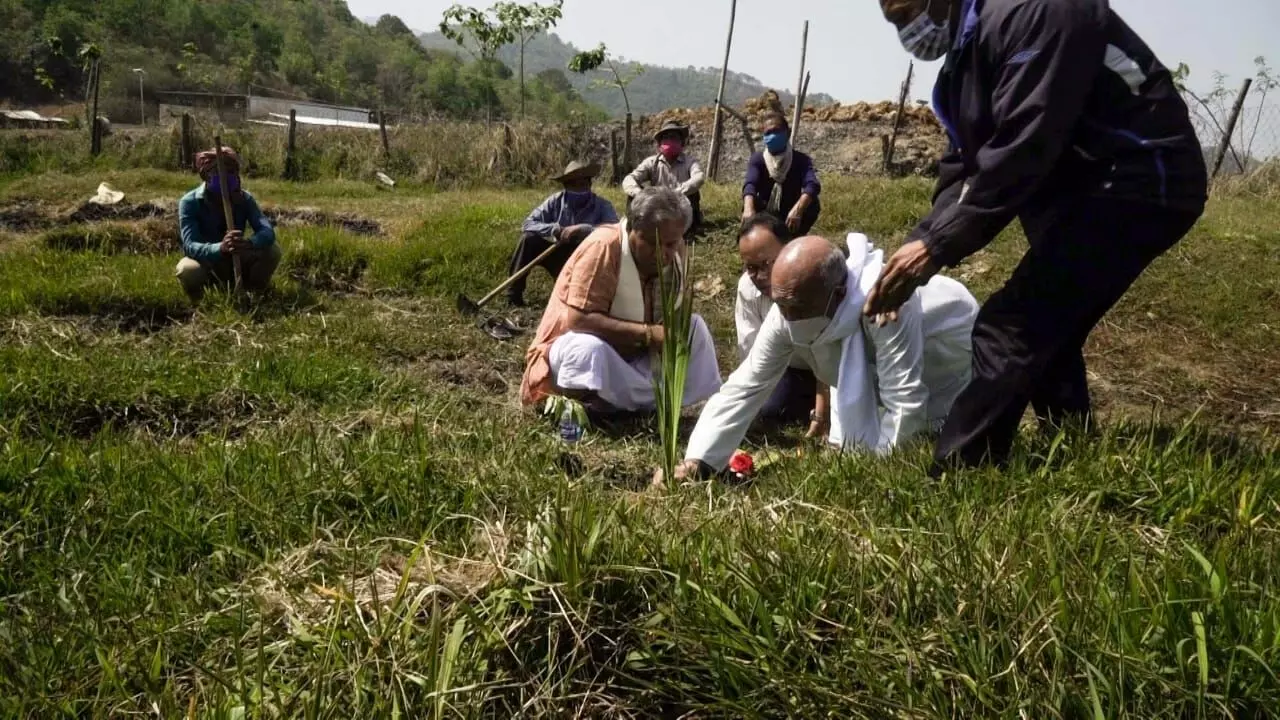
Photo: Sobhapati Samom
Yaralpat (Manipur), April 27: In a memorable attempt to bring back Manipur's legendary seasonal flower-Kombirei or water Iris (Iris Laevigata) at its original habitat in a scientific manner, the Directorate of Environment & Climate Change in collaboration with local communities begins to transplant the saplings of the flower at Yaralpat, a shrinking wetland in Imphal east district.
The elders of Yaralpat Integrated Farming Cooperative Society Ltd(YIFCS) and Manipur Initiative for Conservation of Nature(MICON) besides others on Monday transplanted the Kombirei saplings at the specific areas of Yaralpat with technical support from Council of Scientific & industrial Research (CSIR)-Northeast Institute of Science & Technology (NEIST)Lamphelpat and local traditional knowledge partners from Khoidumpat, another wetland, according to officials.
Joint Director Dr T Brajakumar Singh of Directorate of Environment & Climate Change,said ,the step has been taken up as part of the continuing rejuvenation program of Yaralpat under the National Plan for Conservation of Aquatic Ecosystem and Climate Change Adaptation Approach.Yaralpat has been reported as Marsh or Swamp in the Wetlands (Conservation and Management) Rules, 2017. Based on the Survey of India edition (1923-42) compiled in 1955,the Mauve-blue flower species (Kombirei or Blue Iris Laevigata Fisch) is one of the historic habitats at Yaralpat, Dr T Brajakumar said.
Keeping these facts, the rejuvenation program of Yaralpat has been continuing since the last 7/8 years and migratory and resident birds have already been reported every year for the last 3/4 years,he added. Now, the rejuvenation and conservation work of Yaralpat wetland has been continuing in collaboration with MICON and YIFCS.
According to reports, Kombirei is a plant which grows on marshy land and its blooming season (April) signifies the end of the previous year and onset of a new year on the Meitei calendar. The flower is an essential item during Cheiraoba festival which usually falls in April every year in Manipur.
Due to various factors, Kombirei which once grew wild at Lamphelpat and Yaralpat wetlands in the outskirts of Imphal, now blooms only in the gardens and some unknown march areas.
On the technical support, Principal Scientist Dr H Birkumar of CSIR-NEIST Lamphelpat, said, "The technical knowhow and scientific inputs are being provided from our side." "In true sense pure peat/bog materials are not available in the Yaralpat, I mean around 40-60 % original peat has been transformed into soil which is a big challenge for us in the present attempt of rejuvenation of our religiously associated Kombirei but high hopes are with us," he said.
